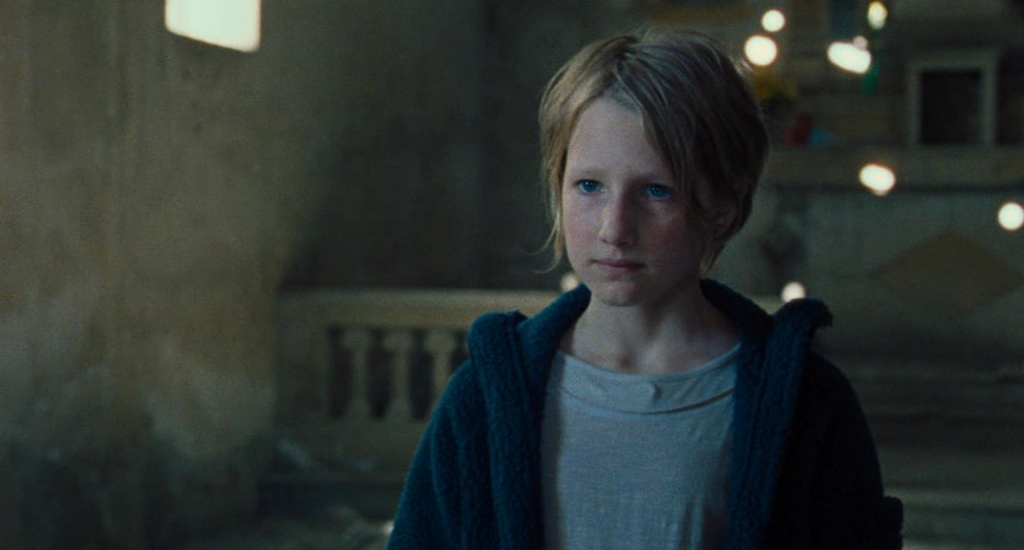Formally and stylistically, Alice Rohrwacher’s Corpo celeste (2011) is familiar art house fare, but it nonetheless provides a fascinating glimpse into a small religious community in southern Italy. The thirteen-year-old heroine, Marta (Yle Vianello), is mainly a passive observer rather than an active protagonist, and much of the movie’s slender narrative consists of her going about her usual routines — chiefly, attending catechism classes, spying on her neighbors, and fighting with her older sister. The other important character is a local priest (Salvatore Cantalupo) who goes door-to-door telling his parishioners who to vote for in the next election, and what sets the film apart from other coming of age stories is its negativity about Catholicism, which is conveyed primarily through the gritty mise en scène. Nearly everyone associated with the church is not just unsympathetic but physically unattractive, down to the dirtbag janitor who’s tasked with disposing of a litter of kittens by putting them in a plastic bag and smashing it against the pavement. Given everything the Catholic Church has done, it seems a tad myopic for the movie to hurl so much scorn at sexually unfulfilled Sunday school teachers and careerist priests, but at least it’s a step in the right direction.
Hobo With a Shotgun
In the opening minutes of Bruno Dumont’s Hors Satan (2011), a rural teenager (Alexandra Lemâtre) enlists a haggard looking man (David Dewaele) to kill her stepfather with a shotgun (it’s never precisely explained why), but this isn’t a story about lovers on the run from the law. (For one thing, the police never suspect them of the murder. What’s more, they’re not lovers.) Instead, the movie gradually reveals who the characters are through the repetition of their daily routines, as in the tightly framed shots of the man knocking on different doors and receiving food from unseen donors. However, the sparse dialogue often doesn’t explain what’s happening or why, giving viewers room to come up with their own answers. In other words, unlike most narrative films, where there’s a narrow range of possible inferences — as opposed to interpretations — here there are numerous ways of explaining the enigmatic plot. (An episode involving an apocalyptic fire is especially ambiguous.) Although the movie ultimately slides into religious allegory, culminating in a resurrection cribbed from Carl Theodor Dreyer’s Ordet (1955), the elliptical storytelling is never less than captivating.

